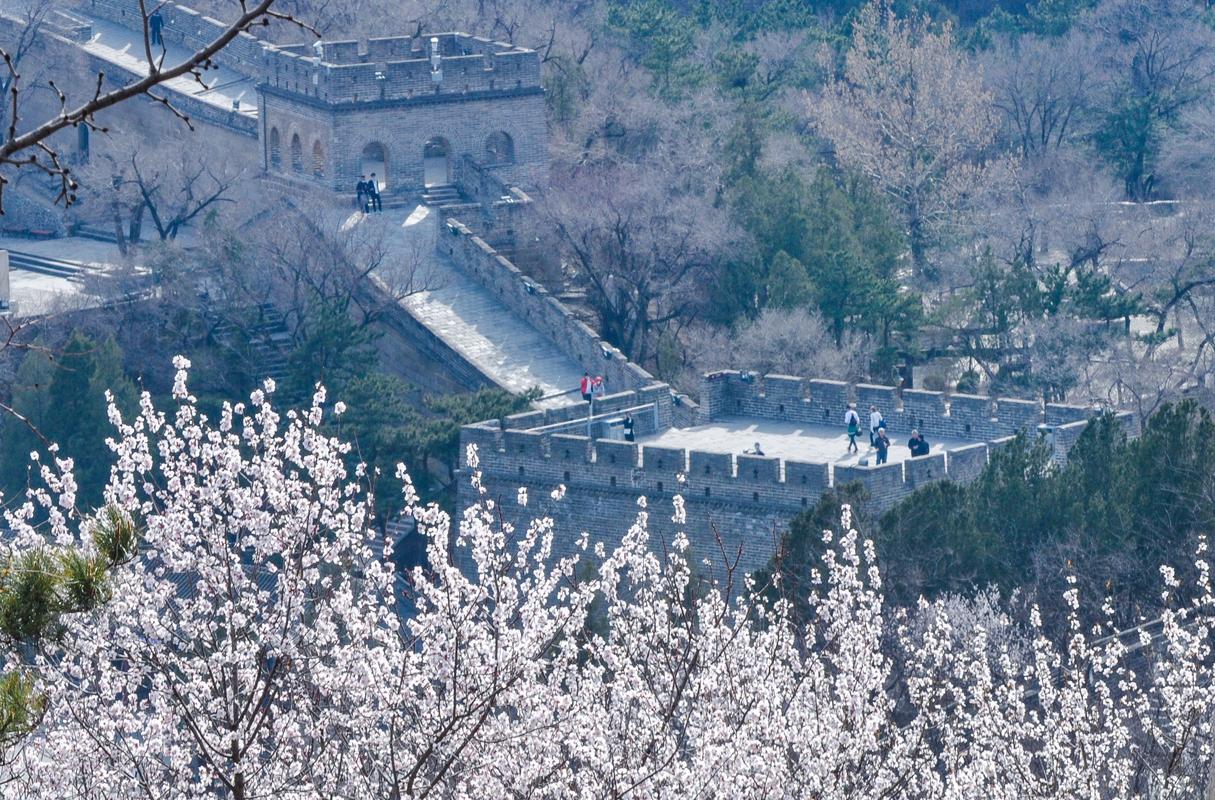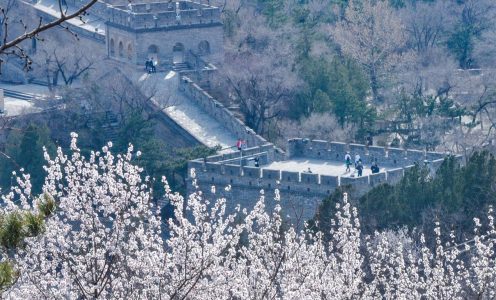Have you ever wondered how to professionally photograph the Great Wall? The Great Wall of China is a storyteller, not only a fortress from antiquity. Every brick and watchtower whispers stories of time itself, emperors, warriors, and change. But if you have ever tried to portray its grandeur via a camera, you could have discovered: “it’s not that easy”.
How then do you capture amazing images that fairly represent this historic site? Whether your desired Great Wall moment is for a bright sunrise, a dreamy foggy morning, or a snow-dusted masterpiece, the *timing, light, and season*determines all the difference.
From the optimum lighting to the greatest Great Wall season for your photographs, this book will walk you through all you need to know about Great Wall photography. All set to improve your trip camera work? Let us start right now.
—-
Understanding the Light: Beyond the Golden Hours
The Best Great Wall Time for Taking Magical Images
Great Wall photography is about when not only about where you shot. Sunlight interacts with the ancient stones in such varied ways depending on the time of day, producing different textures and emotions. Here’s the path to mastery.
Golden Hours (Sunrise & Sunset)**
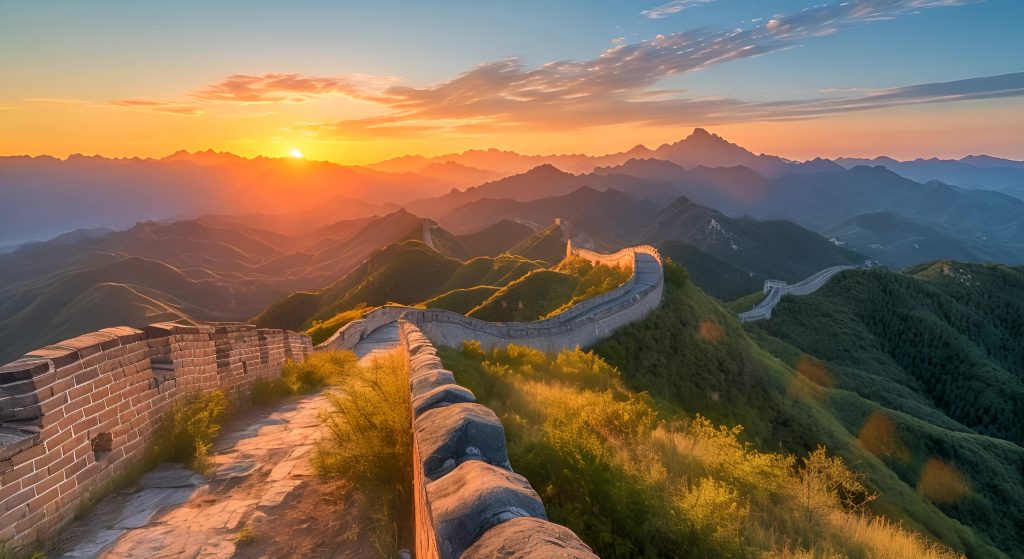
Best Locations: Jinshanling, Mutianyu, Simatai
Best time: 5:00 AM – 7:00 AM (Sunrise) / 5:00 PM – 7:00 PM. (Sunset)
Every photographer dreams about golden hour. Long, dramatic shadows and gentle, warm light improve the brick patterns on the wall. This is the ideal moment for epic silhouette, views against the heavens or sunbursts peeping through the watchtower windows.
*Arrival [ 30 minutes before ] sunrise or sunset will help you to arrange your shot. *
*For crisp, detailed landscapes, use a tripod and set your aperture to f/8 or above. *
*Use a slow shutter speed (1–3 seconds) if you wish to record moving clouds or mist. *
Blue Hour & Twilight**
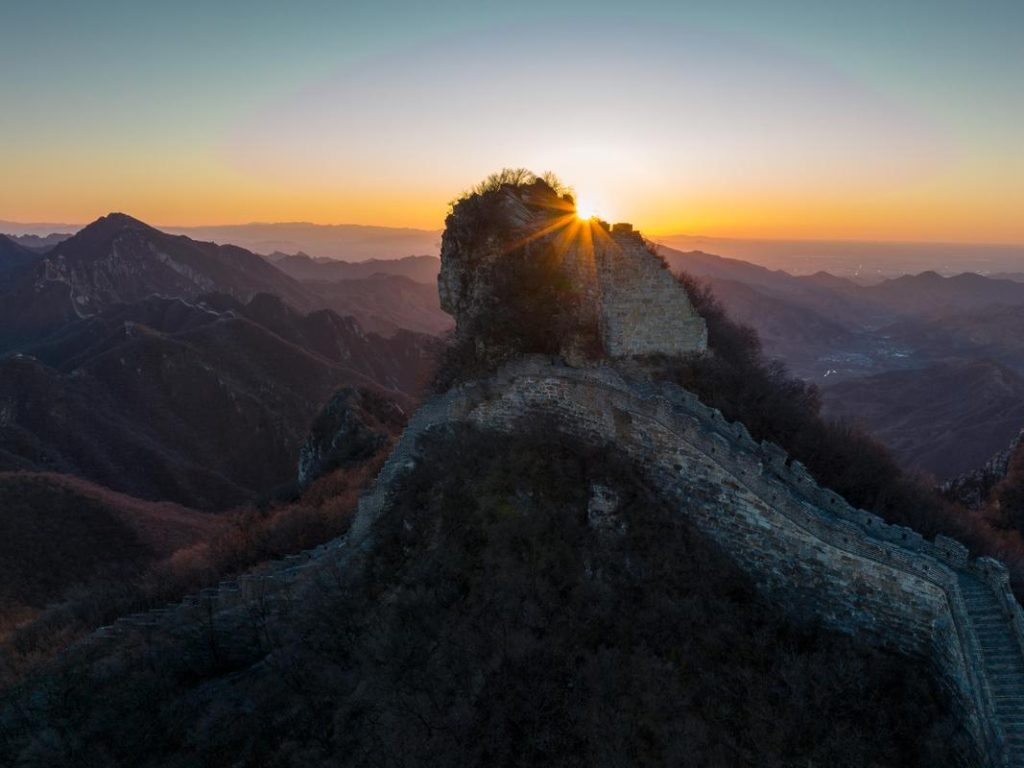
The best Great Wall Time is **7:00 PM – 8:30 PM**;
Best Locations: Simatai, the only portion open for nighttime excursions, is **best Location**.
Perfect for dramatic, atmospheric images, the **sky shines with vivid blues and purples** right after sunset. Even **Great Wall photography** in **Simatai**, where lantern-lit watchtowers produce almost magical radiance, is possible.
To gather low light details, use a **wide aperture (f/2.8–f/4)** and a somewhat **higher ISO (800–1600**.
To prevent camera vibration over lengthy exposures, bring a **remote shutter release**.
Midday Sun: A Challenge or an Opportunity
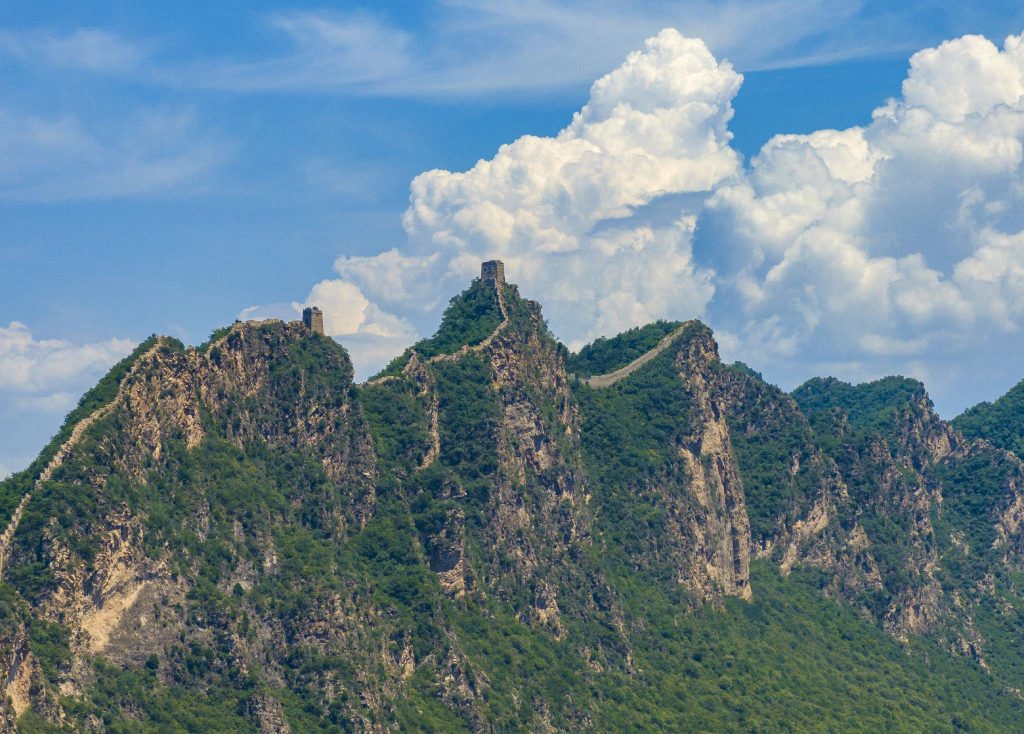
Best time: 11:00 AM – 2:00 PM is the best Great Wall Time.
Best Locations: Jiankou (for shadow play), Badaling (should clouds be present)
Although the light is “too harsh, producing flat, washed-out images” many photographers avoid midday; nevertheless, if you know how to deal with it, midday may still be profitable.
Using a polarizing filter will help to decrease glare and deepen blue sky.
Emphasize *close-ups of bricks, steps, and worn-through carvings* that, under high light, seem dramatic.
If at all possible, arrive on a **partly overcast day** since clouds naturally diffine sharp shadows.
How Great Wall Photography Uses Weather
The mood of your images is totally changed by the weather. Sometimes “bad” weather really produces the most breathtaking Great Wall images.
Best in Jiankou and Huanghuacheng, **Fog & Mist** produces **mystical, dreamlike** images.
Summer thunderstorms, which are best in Gubeikou, offer **drama and contrast**.
Freshly washed brickwork seem extra vivid and less crowds make better compositions.
Planning your **Great Wall time** around weather conditions can make all the difference between an average snapshot and an award-winning picture.
+/-
Seasonal Splendor: The Great Wall in Every Season
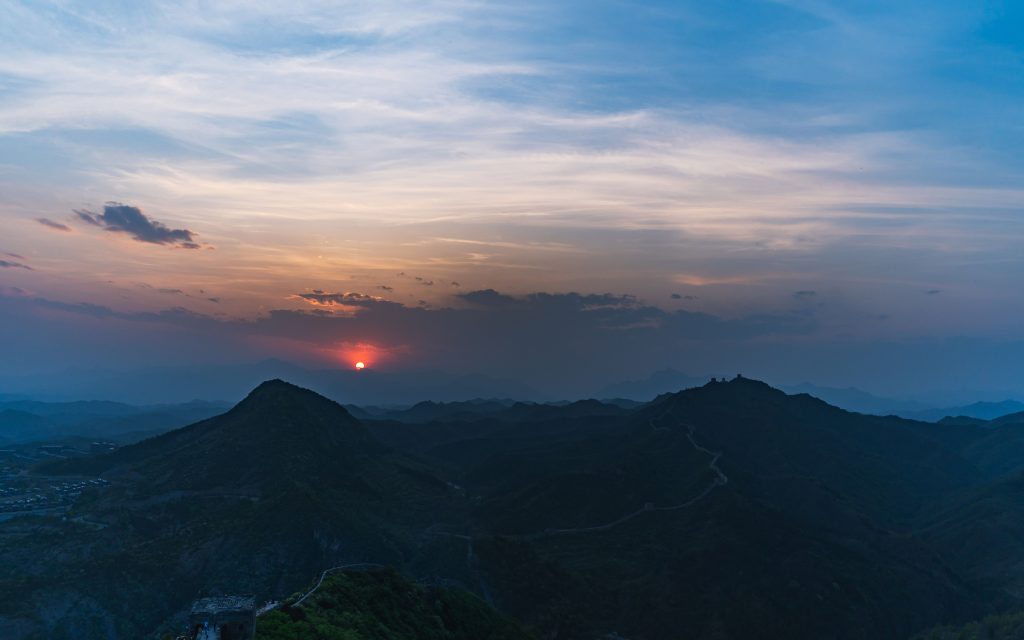
*When would be the ideal time for photographing the Great Wall?
Seasons change the Great Wall, just like lighting does. It seems straight out of a fairy tale some months cover in lush greenery while others coat it with snow. This is how every Great Wall season influences your photos.
Spring (April–May) Blooming Beauty 🌸 📍
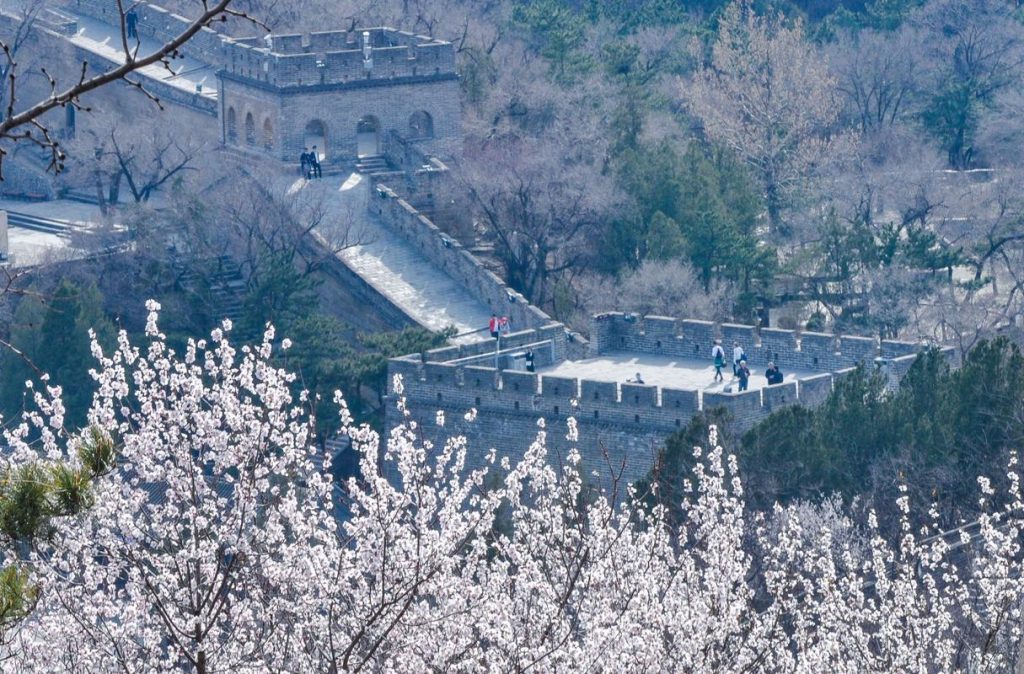
best great walls :Jiankou (wildflowers), Mutianyu (peach blossoms)
The Great Wall comes alive in spring. A fresh, vivid contrast against the grey stone comes from bright green hills and blossoming flowers, and they colored the Great Wall a beautiful picture.
In the morning, dew-covered blossoms can be photographed with a macro lens.
Aim for midday when the sky is bright blue — this counteracts the rich vegetation.
Summer (June–August) Lush but crowded ☀️ 📍
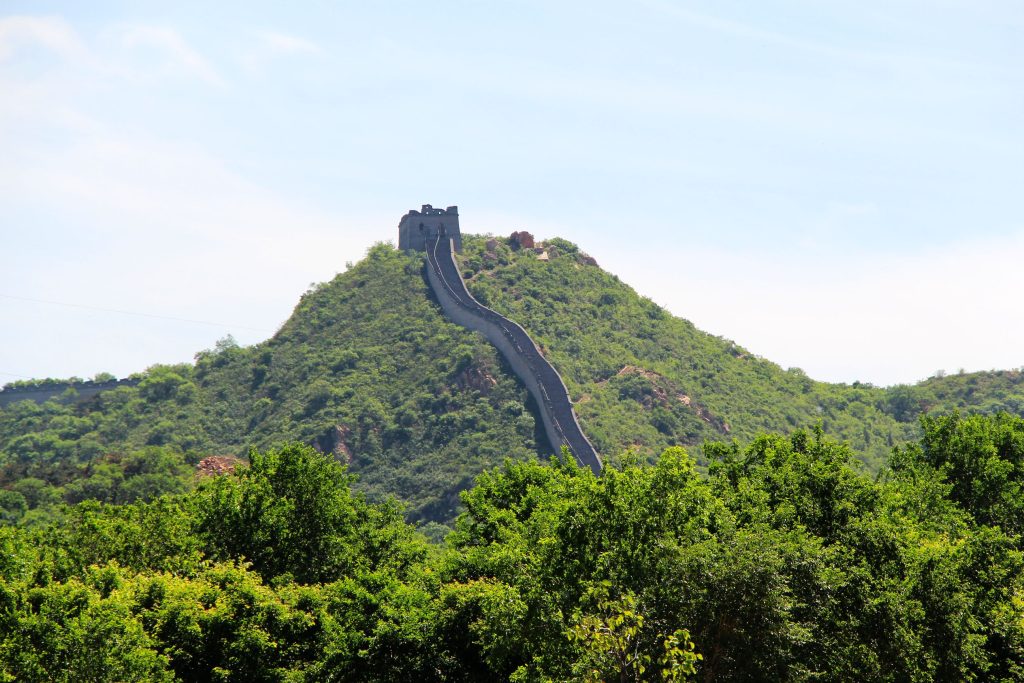
Best Great walls: Gubeikou (fewer visitors), Huanghuacheng ( lake reflections)
Though it’s also a peak tourist season, but summer brings many things: like lush green mountains, dramatic thunderclouds, and deep blue sky.
Arriving early—before 7:00 AM—helps you to beat the throng with
photography tip: Capture clouds rolling in**; the striking compositions created from the contrast of sky and green slopes.
Autumn (September–October) Fiery Foliage 🍁 📍
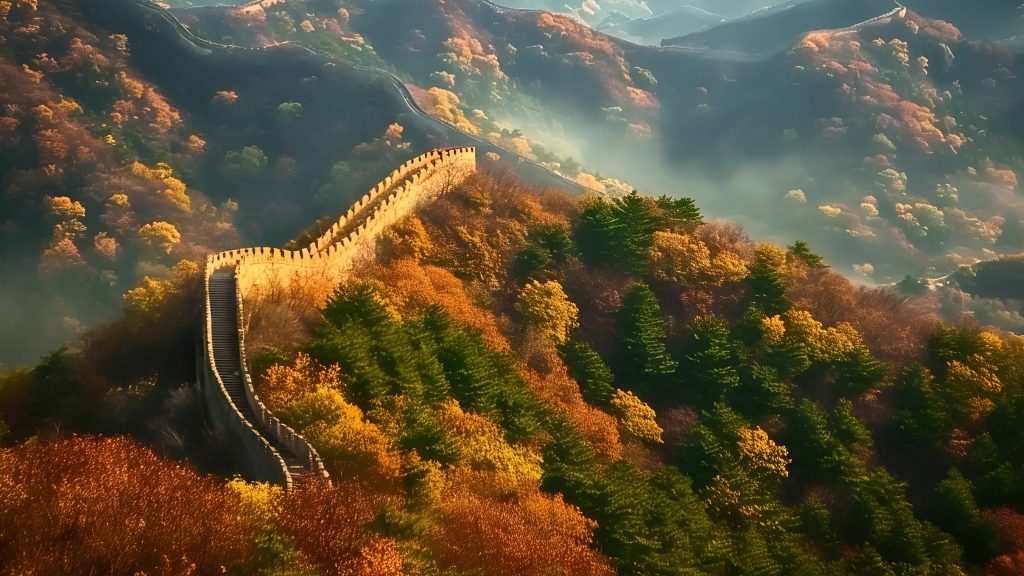
Best Great walls: Jinshanling, Mutianyu (for golden woodlands)
For photography, autumn arguably is the best Great Wall season. The stunning, warm contrast created by the beautiful red and orange leaves against the antique grey stone, it is truly unforgettable and you cannot miss that.
Photography Tip: compress layers of wall and woodland using a telephoto lens; Shoot during golden hour to accentuate the warm tones.
Winter (November–March: A Snowy Fairytale ❄️ 😆
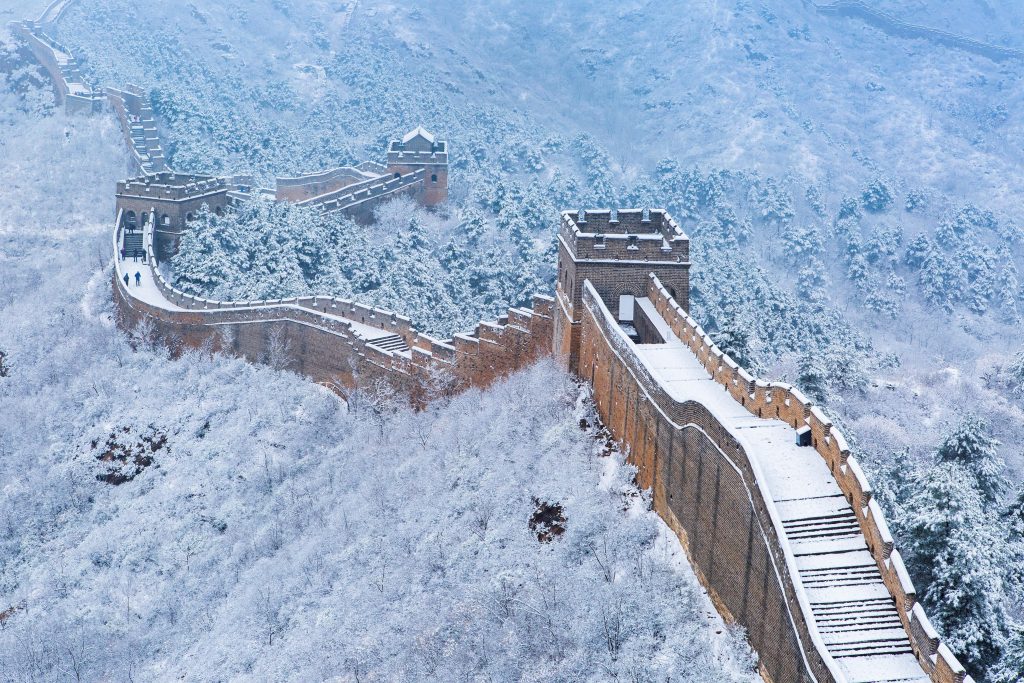
Best Great walls for Great Wall photography: Jiankou (for unspoiled snow), Jinshanling (for daybreak)
winter is a secret treasure. The white snow changes the wall into an unearthly scene. the stunning scenery will make you cannot breath.
To maintain snow looking brilliant and sharp, Overexpose by +1 stop.
Wear touchscreen gloves to change camera settings in the cold.
The Great Wall season you chose defines your narrative. Autumn whispers of history; summer bursts with life; winter tells of endurance and solitude.
—/-
The type of shot you wish will determine the best Great Wall time you gonna choose:
Dreamy & Soft – Golden Hour in spring or autumn;
Dramatic & Bold – Stormy summer sky** or **misty mornings;
Mystical & Rare – Winter snow or twilight blue hour.
Mastery of light, season, and weather will enable you to produce timeless and ‘not just beautiful’ Great Wall images.
| Shot Type | Best Time to Visit | Season | Weather/Lighting Conditions |
|---|---|---|---|
| Dreamy & Soft | Golden Hour | Spring or Autumn | Soft, warm light with clear skies |
| Dramatic & Bold | Stormy Summer Sky or Misty Mornings | Summer | Dark, moody clouds or morning mist |
| Mystical & Rare | Winter Snow or Twilight Blue Hour | Winter | Snow-covered walls or twilight’s cool hues |
Planning, activities, and photography advice help you master your Great Wall Adventure
The Great Wall represents an experience rather than only a location. **timing, season, and planning** will make all the difference whether your travel is historical exploration, photographer pursuing the ideal shot, or adventurer seeking amazing vistas. Here’s the difficulty, though: which part ought you to visit? How would one stay away from throngs?
+/-
Organizing Your Photo Trip
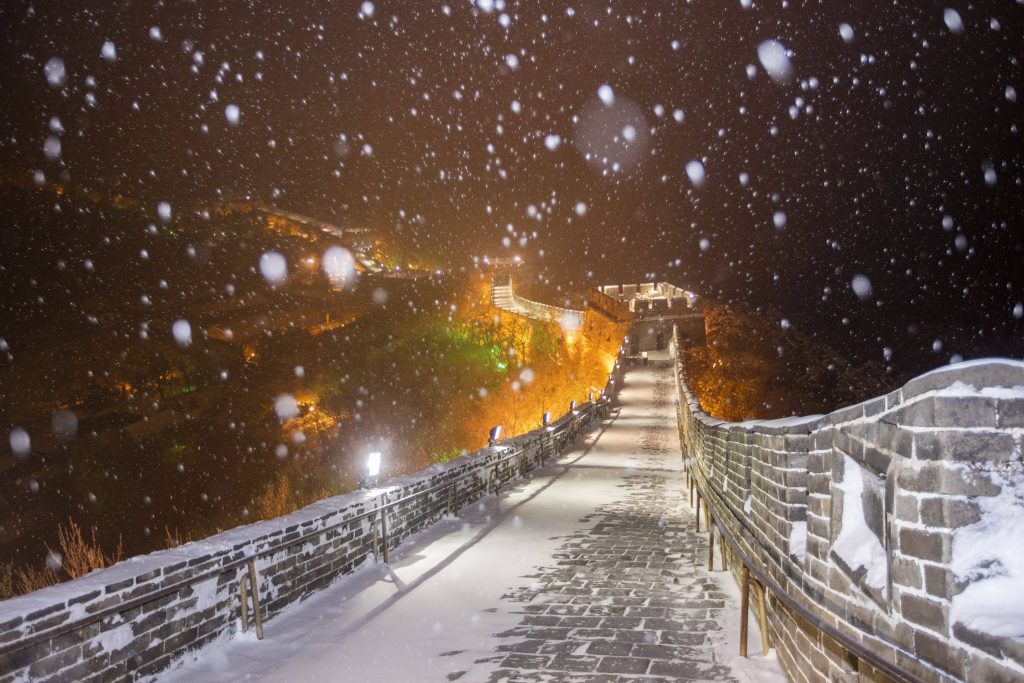
Which Great Wall Section Best Sufits Your Photographic Objective?
Choosing the correct part is critical for both visitors and photographers given over 13,000 miles of wall. While some areas are wild and unspoiled ideal for spectacular views, others are rehabilitated and easily accessible. Let us examine: [Balanced crowds, excellent sunrise/sunset views, family-friendly access, 📸 Great Wall Photography Tips: Best photo at golden hour with soft lighting on its renovated watchtowers. ]
Mutianyu: The Picture-perfect All-Rangeer
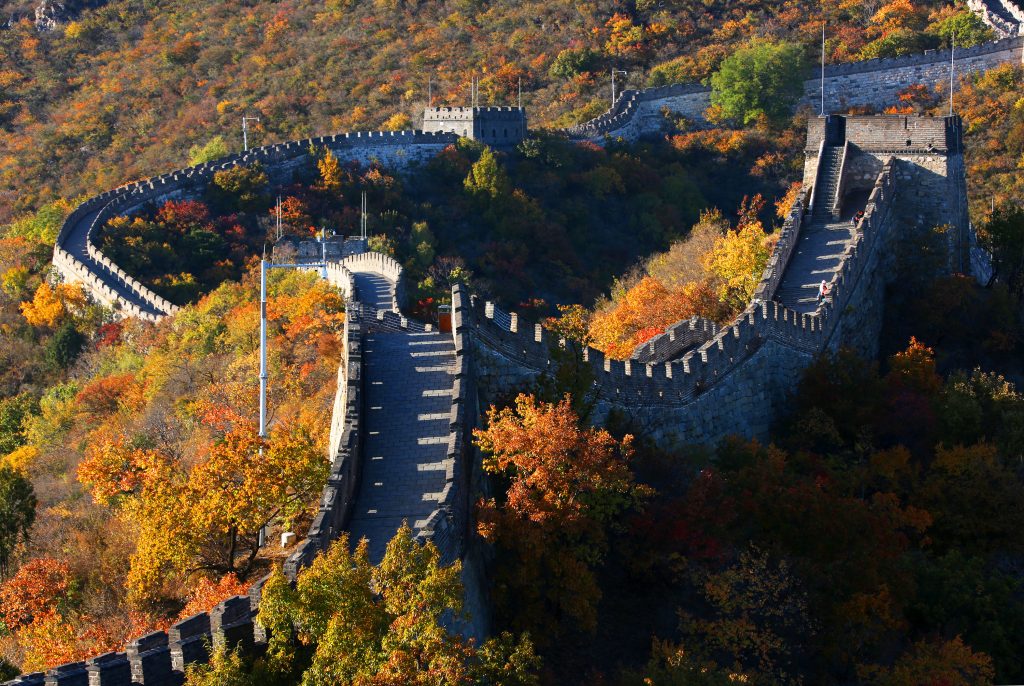
Mutianyu is your best choice if you wish **beautiful scenery without much climbing.Both family visitors and photographers would find it perfect with a cable car and really pleasant walkways.
Arriving at 7:00 AM will help you to escape traffic and grab misty morning light.
Cut glare and deepen blue sky with a polarizing filter.
The best season here is mid-autumn, October; the foliage explodes in red and gold.
—-
Jinshanling: The Dreamy Photographer’s Haven
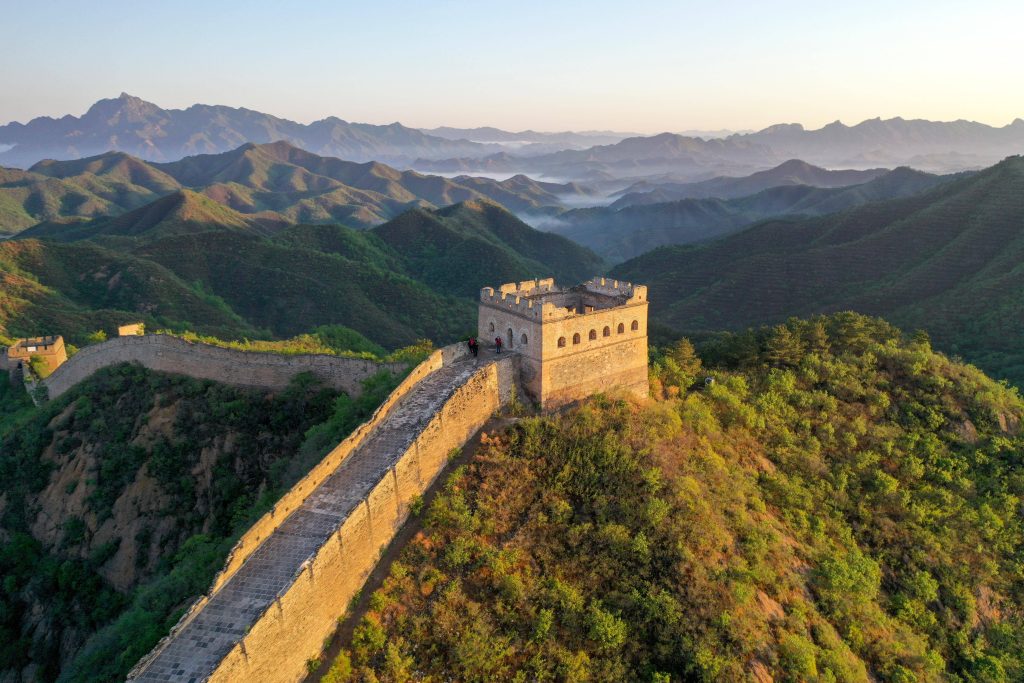
Wide-angle pictures, varied terrain, sunrise/sunset aficioners** Great Wall Photography Tips: Layered ridges make great telephoto compositions.
Clearly the most photogenic portion is Jinshanling. Why? Every frame is dramatic from watchtowers, steep slopes, and rolling hills. Snow-covered stones strikingly contrast in winter against a brilliant dawn.
Use a 70-200mm lens to record watchtowers disappearing into the mist; the finest time here is **6:30 AM** in winter when **first light** strikes the towers.
Visit in March or November for less traffic and clean heavens.
+/-
Jiankou: Wild, Rugged, and Untamed
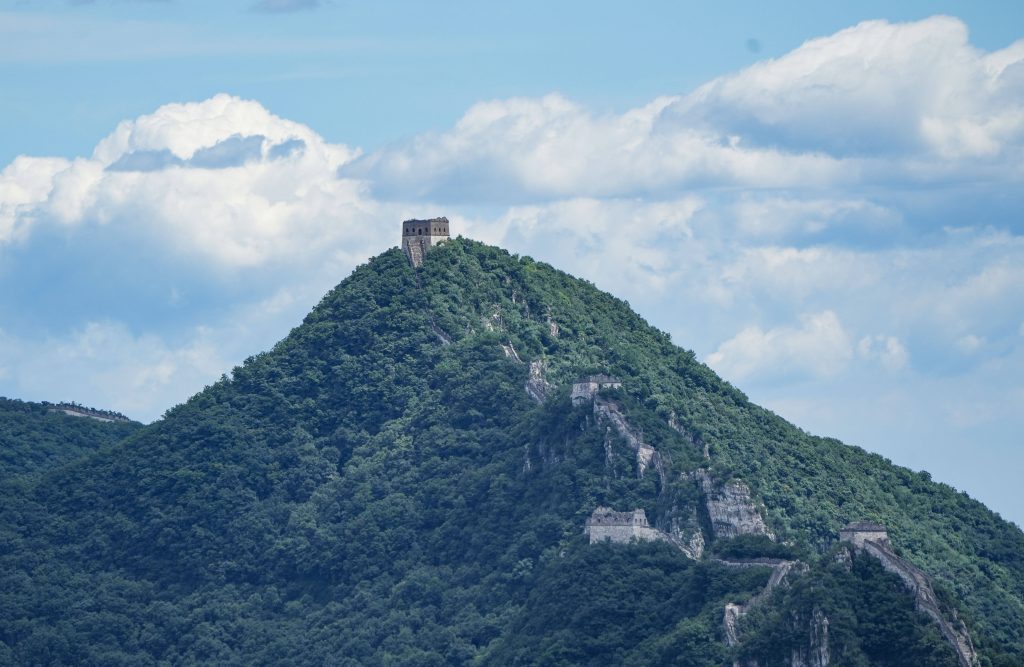
Best For: Adventurers, experienced hikers, dramatic mountain shots
Great Wall Photography Tips: Best for foggy, moody mornings
Jiankou is for you if you wish **raw, unspoiled beauty**. Steep, fragmented areas make **challenging yet rewarding**—not for casual visitors.
To catch misty, golden light, hike before dawn (with a guide) and, if allowed, use a drone to get dramatic aerial viewpoints.The ideal season is Spring (April–May); luscious green mountains accentuate the historic remains.
—–
Simatai: The Only Night Photography Spot

Best For:** Twilight aficioners, low-light photography, original viewpointsExcellent Wall
Photographues Advice: Against a deep blue sky, capture lantern-lit watchtowers.
Simatai is the only portion open at night, hence it is a rare chance for evening Great Wall photography.
For crisp night images, tripo and set a slow shutter speed between 5 and 10 seconds.
Visit in autumn (September–November) for sharp stars and clean heavens.Maximum light is captured with a wide aperture between f/2.8 and f/4.
Choosing the correct site will enable you to maximize **Great Wall season and time** for your needs!
—/-
Extra Activities at the Great Wall
A visit to the Great Wall offers rich culture and history ready to be discovered, not only hiking and photography.
Jiankou to Mutianyu **1. Hike the Wild Wall**
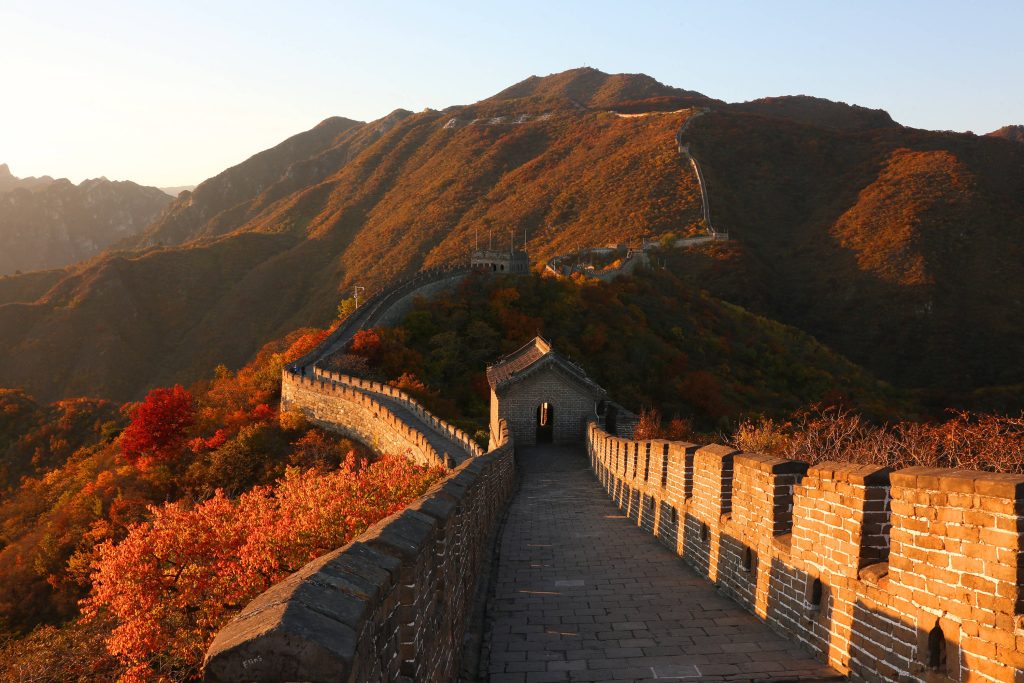
Travel from wild Jiankou to restored Mutianyu if you wish the best of both worlds. This 4-hour trip takes you through unspoiled ruins and leads into well-preserved sections
Starting before sunrise will allow one trip to witness both wild and restored beauty.
Bring enough of water and wear strong hiking boots; the ground is rugged.Best done in **autumn** when moderate temperatures abound.
+/-
Overnight in Gubei Water Town
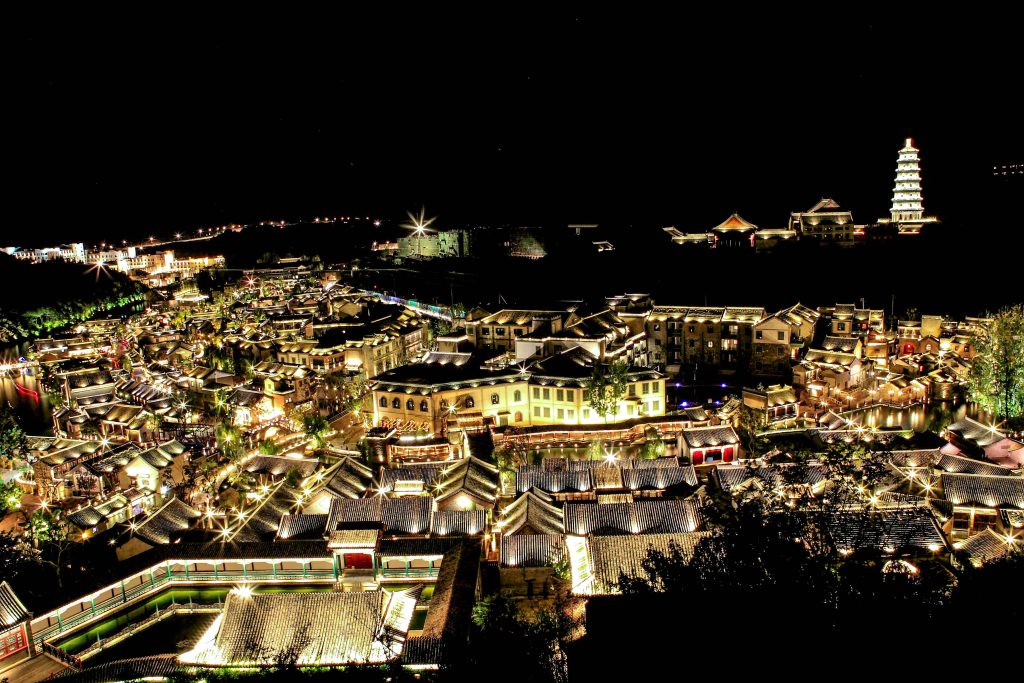
Imagine watching the sunset over Simatai then walking late night through an old water town. Scenic riverfront town **Gubei Water Town** provides traditional courtyard accommodations, street food, and even hot springs.
Visit in winter to see snow-covered rooftops and few visitors.
Try handmade dumplings and local cuisine including roast duck.
*Stay at Simatai Great Wall Hotel for the greatest views of daybreak. (personal advice)
—–
Purchase Original Memoranda at Mutianyu
Choose meaningful keepsakes from hand-painted scrolls, carved stone carvings, and silk needlework rather than mass-produced souvenirs.
Bargain gently; vendors will appreciate it.
Look for handmade authenticity to steer clear of mass-produced copy-cats.
—-
Photographues and Techniques advice
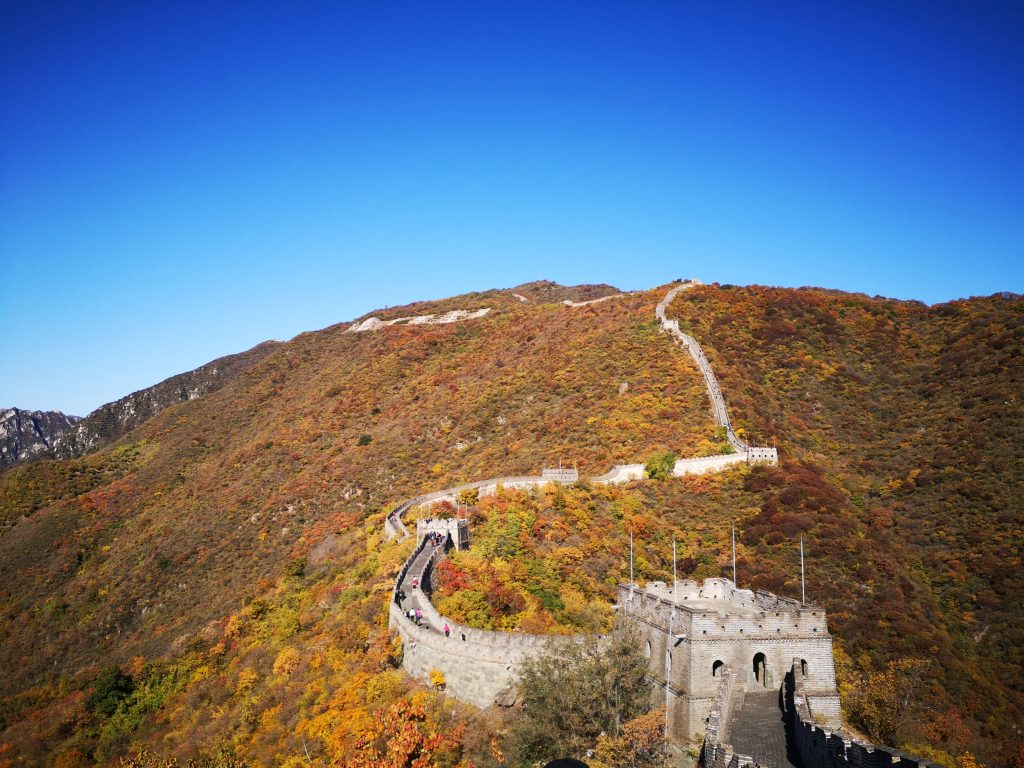
How Do Pros Get Beautiful Great Wall Images
While technique distinguishes a good shot from a masterpiece, the right section and season are crucial.
Composing Mastery
Natural leading lines created by the Wall’s curves and watchtowers can be used to direct the viewer’s eye.
✔️ **Frame views naturally** using archways.
✔️ **Shoot at several angles**—avoid conventional tourist images.
✔️ **For scale and narrative** include humans.
—
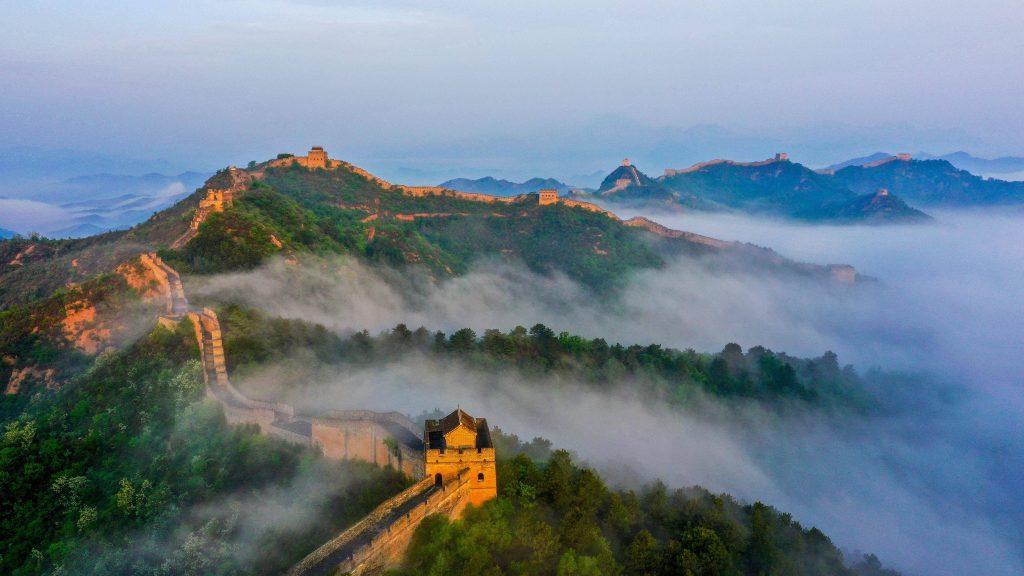
Selecting the Correct Tools
For magnificent scenery, **Wide-angle (16–35mm**; for watchtower layers, **Telephoto (70–200mm**; if allowed, **Drone** for original aerial views.
For sharp images, keep your ISO low—between 100 and 400.
✔️ Sharp landscapes: f/8–f/11 for aperture.
✔️ **Shutter Speed** : 1/200s for handheld, slower for long exposure.
————
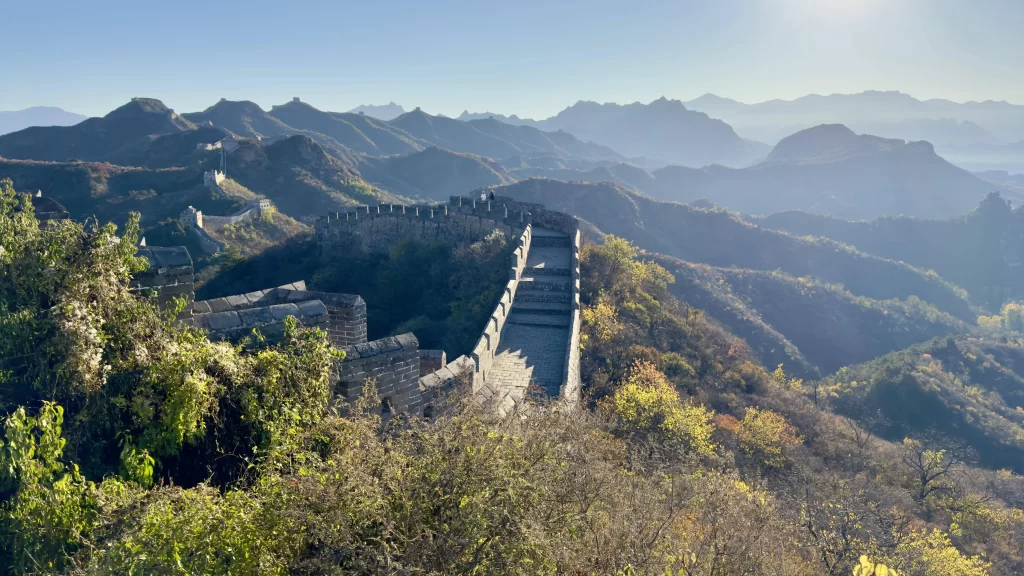
Lighting & Weather Corrections
✔️ **Sunlight bright?**Rich heavens call for a **polarizing filter**.
✔️ **morning foggy**For a mysterious appearance, **silhouettes** should be your main attention.
✔️ **Wintertime Shooting?** Oversite by +1 stop to maintain snow **bright and detailed**
——
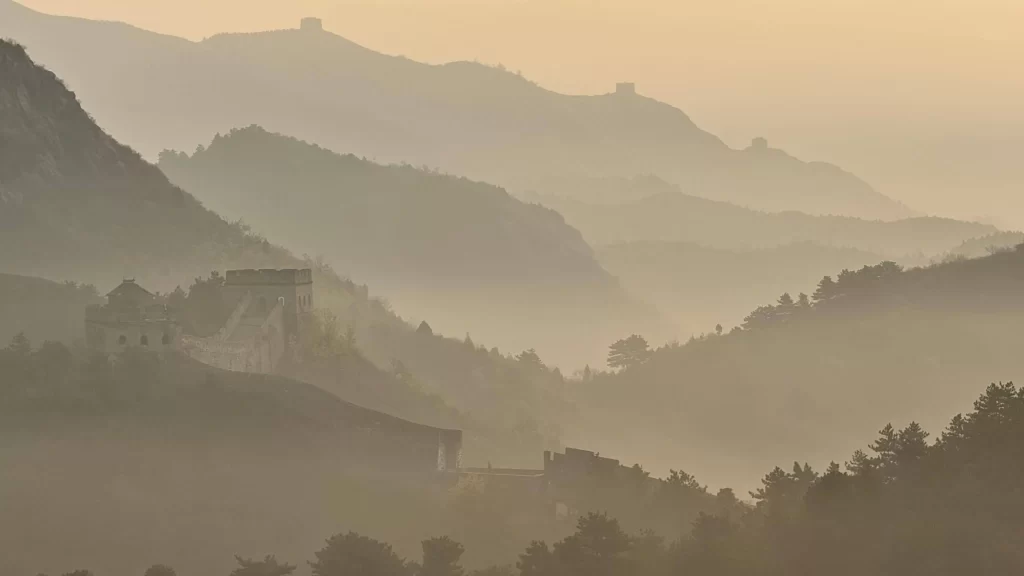
Capturing the Spirit of the Great Wall: Inspiration, Preservation, and Practical Resources
Have you ever seen amazing Great Wall photos and wondered, How could they have captured it so brilliantly? The There is always a way to bring your own creativity into the shot whether it is the golden light of sunrise, the icy calm of winter, or the lush green of summer, so I will list some must-try photo ideas to a chart to help your images stand out. From seasonal compositions to unique viewpoints, prepare to transform your Great Wall photography from average to exceptional.
| Scene | Theme | Best Time/Season | Camera Tips | Special Advice |
|---|---|---|---|---|
| Winter Magic | A Lone Hiker on Snow-Covered Steps ❄️ | December–February | Use a wide-angle lens(16-35mm) | ✔️ Expose by +1 stop for bright snow |
| Focus on the contrast between snow and brickwork | ✔️ Wear gloves with touchscreen tips | |||
| Autumn Glory | Towers Peeking Through Red Leaves 🍁 | September–November | Use a telephoto lens (70-200mm) | ✔️ Shoot at golden hour for a warm glow |
| Adjust white balance for autumn tones | ✔️ Compress layers for dramatic effect | |||
| Misty Morning | A Wall Fading into the Fog 🌫️ | April–June (Spring/Early Summer) | Use a tripod for long exposure (1–3 sec) | ✔️ Shoot before dawn for the best mist effect |
| Emphasize silhouettes of towers in the mist | ✔️ Capture depth and atmosphere with fog | |||
| The Golden Glow | A Watchtower Silhouetted at Sunset 🌅 | Golden Hour (5:00 AM–7:00 AM or 5:00 PM–7:00 PM) | Use a tripod for steady shots | ✔️ Arrive 30 minutes before sunset for the best angle |
| Shoot at f/8 to f/11 for sharp detail | ✔️ Position the sun between the bricks for a sunburst effect |
Consider it: What do you wish your pictures to “say” ?
Using vast views, are you highlighting the immensity of history?
Would you like to draw attention to the winter loneliness of an ancient ruin?
Perhaps you are sharing a vibrant narrative of autumn’s beauty.
Your story is shaped by the moment and season you choose; each visit is unique—every dawn, snowfall, or foggy morning totally alters the ambiance. This is the reason photographers go again and again.
Beyond the ideal shot, though, how can we guarantee this wonder endures for next generations?
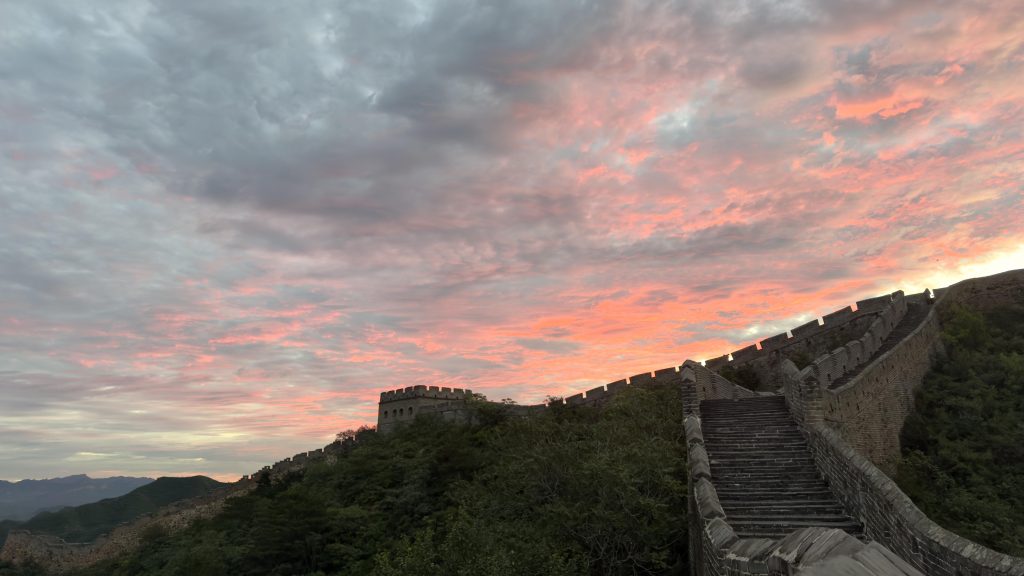
Saving the Moment: Honoring the Great Wall for Next Travelers
While the perfect Instagram picture is easy to concentrate on, the Great Wall is more than simply a backdrop—it’s a fragile ancient treasure.Some of over 2,000 years old pieces are crumbling from natural erosion, overtourism, and even graffiti.
So, as visitors to preserve its beauty while still enjoying it, and what can we do?
**1. Select Ecological Travel Methodologies**
✔️ See **less crowded sections** (like Gubeikou) to **lower stress** in places heavily visited by tourists.
✔️ Steer clear of **walking on unrestored**—the bricks are delicate!
✔️ Take out anything you bring in; never leave rubbish behind.
— —
**2. Support Local Environmental Projects**
✔️ **Hire local guides** engaged in initiatives for preservation.
✔️ Support **Great Wall Conservation Groups** such as China Great Wall Society.
✔️ Book environmentally friendly lodging close to the Wall (some guesthouses support renovation).
— —
**3. Take Responsible Pictures**
✔️ **No drones** in limited places; they might **damage the structure**.
✔️ Not climb unstable watchtowers merely for a better picture.
✔️ **Respect the silence**—just consider what the Wall has seen over millennia.
By responsible travel, we help preserve the Great Wall so that next generations may also enjoy its beauty.
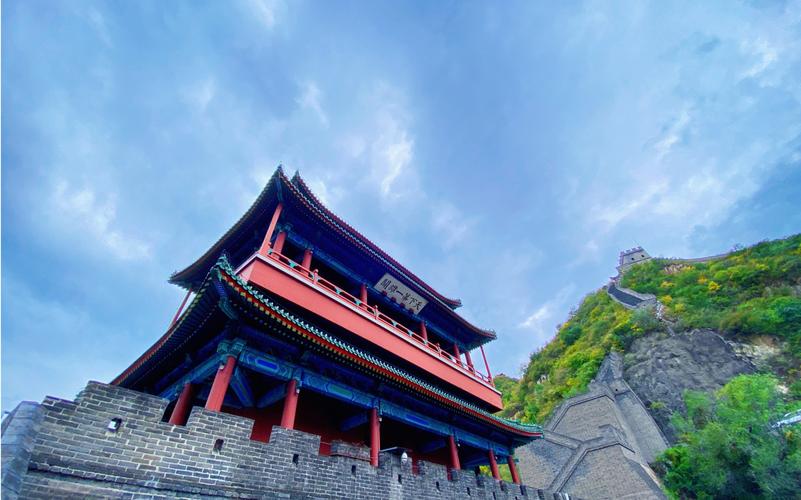
Great Wall Photography Packing List
✔️ **DSLR or Mirrorless Camera** – A phone will not place enough accuracy here!
✔️ **Wide-Angle Lens (16–35mm)** – Catch the sweeping bends of the wall.
✔️ **Telphoto Lens (70–200mm** – Zoom in on mountain layers and watchtowers.
✔️ **Tripod** – Important for **long exposure and low-light shots**;
✔️ **ND Filters** – Perfect for **softening sky in broad daytime
✔️ **Warm Clothes (Winter) / Hat & Sunscreen (Summer)** – Be ready for severe weather.
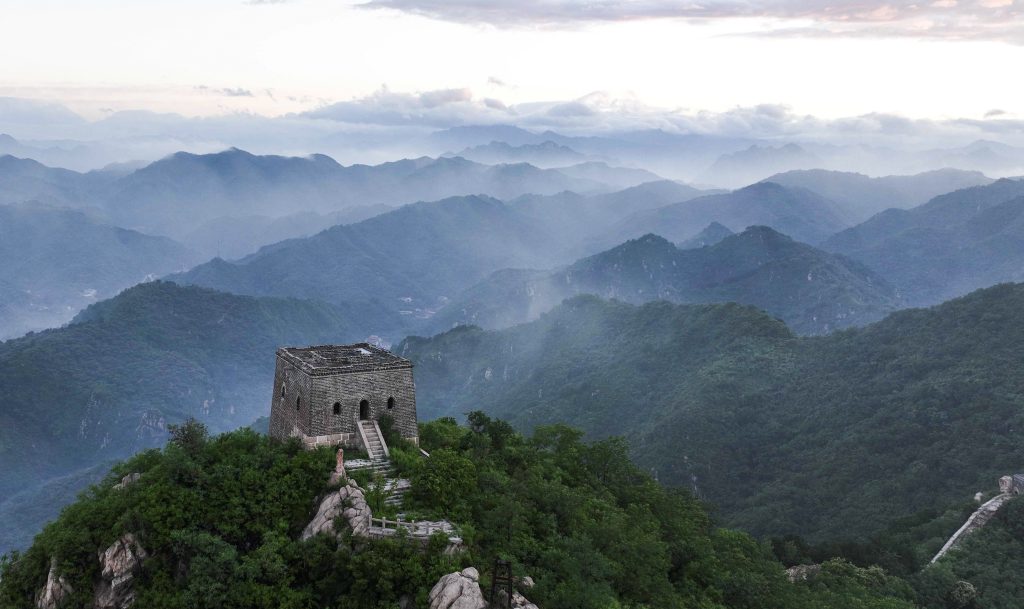
If you’ve made it this far, you’re clearly serious about capturing the Great Wall like never before. Whether you’re planning for golden autumn, snowy winter, or a foggy sunrise, the key to breathtaking Great Wall photography is timing, creativity, and respect for history.
Now it’s your turn. 📸.[more information, visit this website]
china transfer: click here

